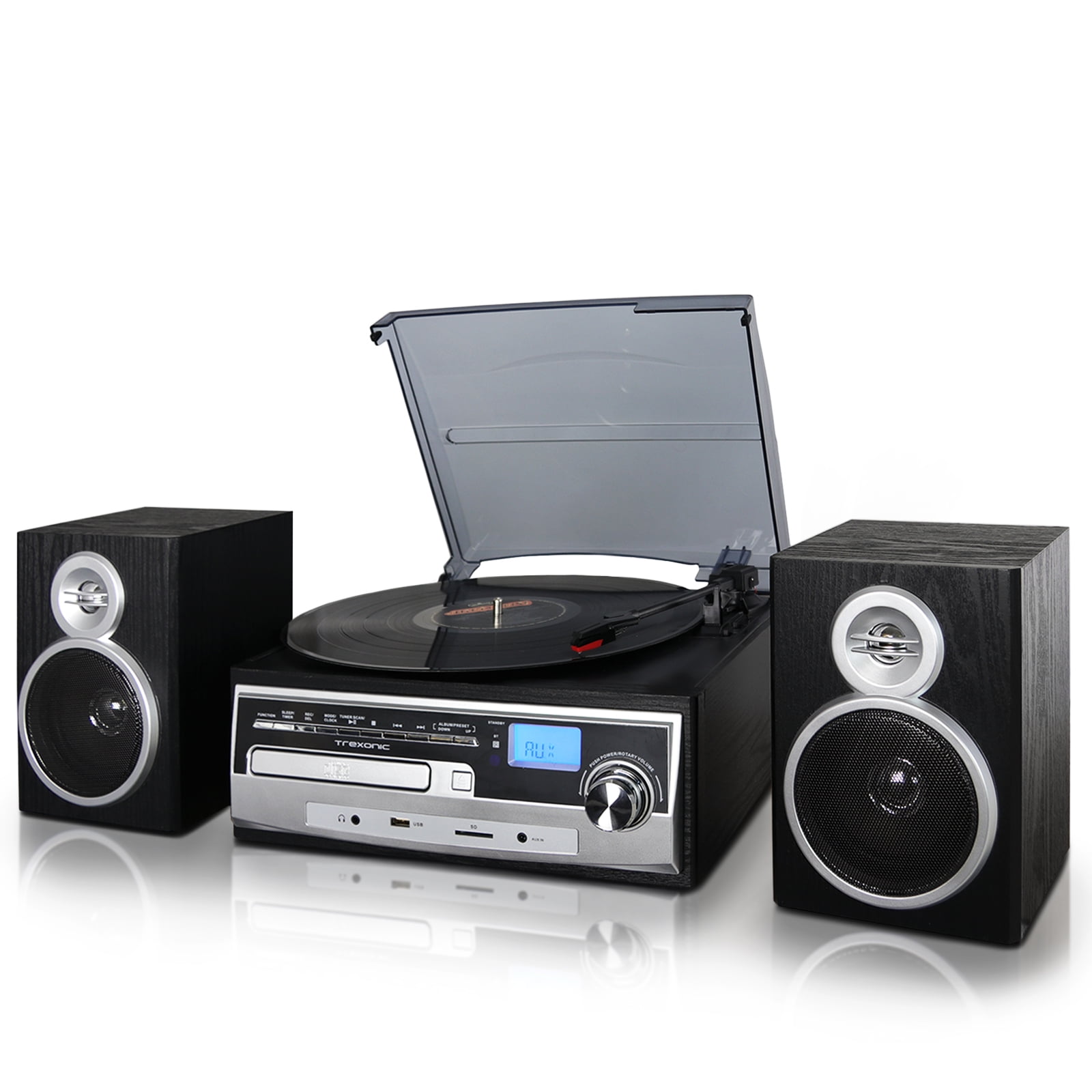


Much easier to connect wirelessly via Bluetooth to an amp or powered speaker, and all the better to hear the Sony’s balanced, quite detailed and impressively dynamic sound. The Sony’s phono stage is pretty good but, let’s face it, you didn’t buy a 310BT to use a load of wires. The beginning and the end of manual, hands-on set-up consists of putting the drive belt on the aluminium platter around the motor pulley. The tonearm has a cartridge and stylus attached, the tracking weight is set. Around the back, just to one side of the hard-wired stereo RCA cables and mains lead, there’s a switch to turn the integrated phono stage on or off. The matte-black plinth has controls for stop/start, arm up/down, 7in/12in selection, 33.3/45rpm and Bluetooth pairing. Short of deciding on the records you listen to, the Sony PS-LX310BT does as much as it can to make your turntable experience as simple and effortless as possible. Mind you, no amount of clever wireless thinking is going to stop you having to get up every 15 minutes or so to turn the record over. It looks and feels good while it’s doing it, too. Which means you can wirelessly stream vinyl to your system, at a truly high-end standard, from a turntable that’s positioned somewhere you’d like it to be rather than where it insists on being.Īnd it’s almost a formality to report that it sounds great, with all of that lovely vinyl expertise where warmth, timing and rhythm are concerned. To make a diverting product pretty much compelling, Cambridge has added Bluetooth connectivity up to a hi-res aptX HD 24bit/48kHz quality. The Alva TT is a sturdy, beautifully made audiophile-grade direct-drive turntable with enough going on in terms of tone-arm, moving-magnet cartridge and integrated phono stage alone to justify its price. Well, Cambridge is here to demonstrate what can be achieved when you attempt to rewrite that particular rule. The words ‘audiophile’ and ‘wireless’ are seldom seen in the same sentence together, unless the words ‘cannot be’ are included too.Īudiophilia has always included a hair-shirt element, a strong suggestion of ‘no pain, no gain’. So finally we can welcome the music centre to the 21st century. Safe to say Juke Box E sounds best when playing some vinyl – Pro-Ject has plenty of experience where these things are concerned, and Juke Box E has detail, dynamism and warmth to spare.īut it’s almost as adept with Bluetooth streaming too, and has enough in the way of insight and drive to make even tiny 128kbps Spotify files sound big and bold. Just strap on some speakers and you’re good to go – all you need now are some records, and/or a music streaming app installed on your phone. But it also has 25 watts of amplification built in, as well as Bluetooth connectivity (it’s a receiver, unlike the other three transmitters in this group) and an analogue input for hard-wiring an additional source. In some ways Pro-Ject’s Juke Box E is an exercise in revisiting the nostalgia of the music centre and luring in the vinyl revivalists at the same time, but – Pro-Ject being Pro-Ject – there’s a little bit more to it than that. Every childhood home had a music centre in it – usually one the child in question wasn’t allowed to touch.


 0 kommentar(er)
0 kommentar(er)
